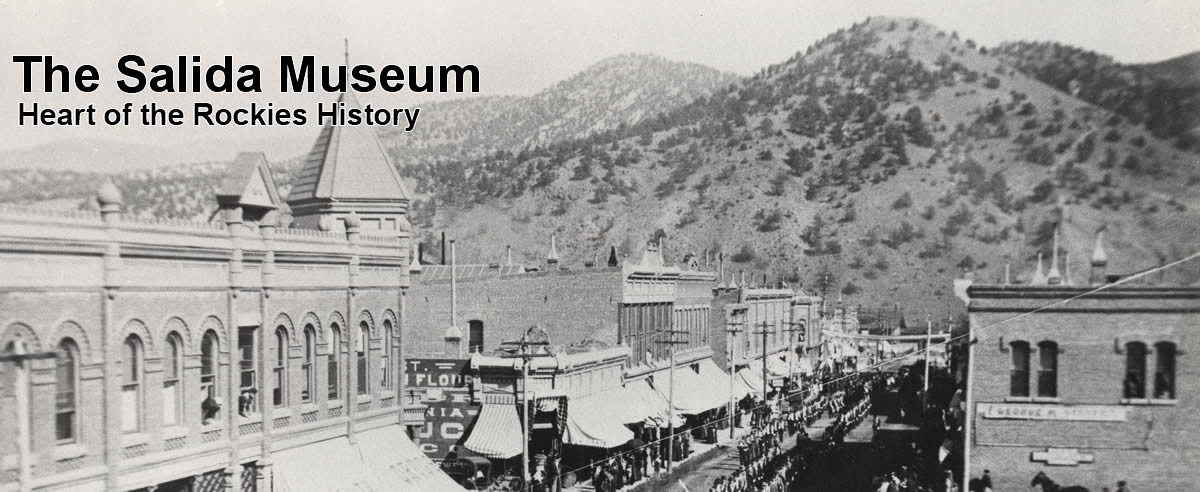WISHING YOU CONTINUED HEALTH AND SAFETY!
A Note from the Museum Board
The worst of COVID appears to be over, and visitors are coming back to the museum. Slowly at first, but we had a good summer, and the trend is up. We have continued to correspond with friends who contact the website, and we have received a number of interesting donations. Some of the highlights are described for you here in the newsletter.
At this point in time we are in need volunteers. We have lost many volunteers over the past several years, and now we are struggling to stay open more than a few days a week. Almost everyone is a historian to some extent. Come by yourself, ask friends and neighbors, recent retirees, to check out the museum and think about volunteering their special talents—attending visitors, arranging exhibits, collecting, cataloging, writing—we can use most kinds of help.
We wish you a happy and healthy winter and hope to see you some time at the museum.
Thanks for your support.
Museum Open House and Book Launch
Salida Museum will host a book signing by local historian and author, Steve Chapman, from 10 a.m. to 4 pm. Saturday, October 22. The signing is in conjunction with the museum’s annual Open House, so admission is free and in keeping with the upcoming Halloween holiday, museum board members and docents will be dressed in costumes associated with Salida’s history. There will be drawings for free Chapman books, and copies of The Mountain Mail’s free publication, True Crime Stories, will be available. Of course, refreshments will be served. Also, Salida Walking Tours will give away two tickets to their Salida history tour every hour.
Chapman’s latest book on local history is “Lynched! Mob Justice & A Madness for Blood – The Vigilante Murder That Stained Salida for Decades.” The book is the story of a vicious lynching which occurred in downtown Salida in 1891 when more than 150 men broke into the jail and murdered a man who was arrested for killing a popular railroad worker. Passengers on an incoming train witnessed the murder that resulted in Salida receiving a label of “tough town” for decades.
“Lynched!” is the sixth of Chapman’s books on Salida history, all available at the museum. Steve Chapman also owns Salida Walking Tours, a company that guides guests on history and ghost walks through downtown.
Chapman will conduct presentations on Salida history at 11 a.m., 1 p.m. and 3 p.m. These sessions will include historic photos and a Q&A session.
This year marks the 68th anniversary of the Salida Museum. We are located behind the Salida Chamber of Commerce on U.S. Highway 50. Current winter hours are 12-4 p.m. Friday, Saturday and Sunday but are subject to change due to availability of volunteer docents.
Salida History: Memorial Day Tragedy
by Arlene Shovald
Community celebrations can sometimes end in tragedy, and such was the case with the Decoration Day celebration in 1904.
Decoration Day was the forerunner of Memorial Day and was established by the GAR (Grand Army of the Republic) in 1868, three years after the Civil War ended. (It became Memorial Day in 1971 to honor all those who died in all American wars.)
In an interview in 1979 Salidan, Ruth Elofson, 87, told the story as she remembered it as a 12 year old orphan who had just arrived in Salida to live with her uncle and cousin.
In those days, boats of flowers honoring the war dead were launched from the F Street bridge to float down the Arkansas River. Elofson remembered the event as being sponsored by the Daughters of the American Revolution.
A swinging bridge had been built across the river about two blocks from the F Street bridge to enable Denver & Rio Grande workers to cross the river to work at the railroad shops. To observe the Decoration Day festivities, a crowd had gathered on the bridge. The bridge was not sturdy enough to support the weight of about 20 spectators, mostly women and children, and it broke, dumping the crowd into the river.
“As far as I know some of the bodies were never recovered,” Elofson said. Articles that followed in the Salida Mail, however, reported the recovery of four bodies. They were Mrs. C.A. Thompson, Hazel Lines, age 6, Pearl Holland, 9, and Esther Morgan, 8, who was Pearl’s playmate.
The Salida City Council offered a reward of $50 each for recovery of the bodies, two of which were found as far away as the Royal Gorge, several days later.
Burials were in Fairview Cemetery.
The location of the swinging bridge was approximately at the end of D Street in Salida.
Activity Roundup
by Earle Kittleman
It was the biggest donation in years until it shrank. Last December crews from Salida Public Works struck an old water main made of wood dating to the early 1900s. They were in the process of excavating for a new water line southwest of town near the S. Arkansas River at the site of the original city water works. They gave the museum a section of the old pipe. But after going on display the wood staves of which the pipe was made dried out and shrank and collapsed within the iron hoops that held them together. It’s still on display while we figure out how to reassemble it.
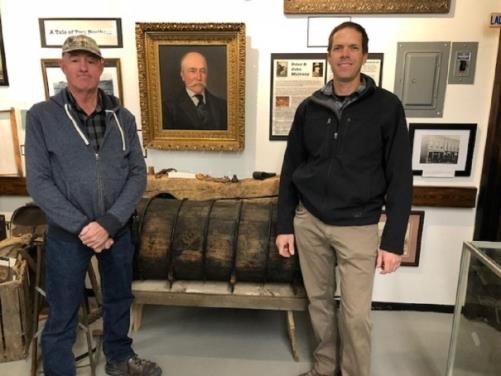
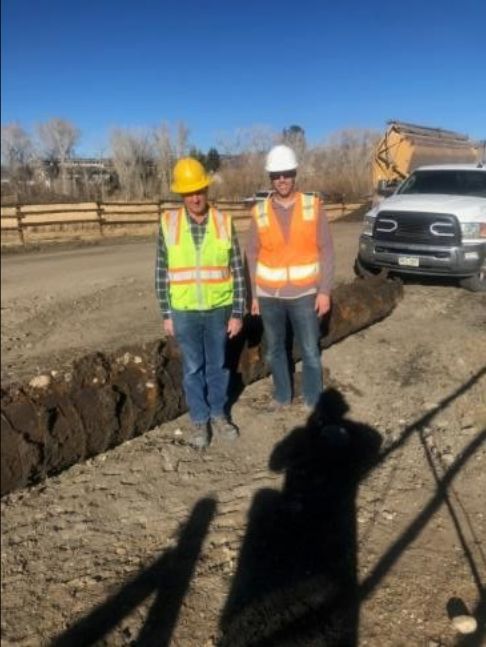
In January, we received some sheet music composed by J. S Ramey who was a popular American song writer and taught music in Salida. The donation came from Laurine Smith on behalf of her mother Georgina Smith, a notable Salida musician in her own right.
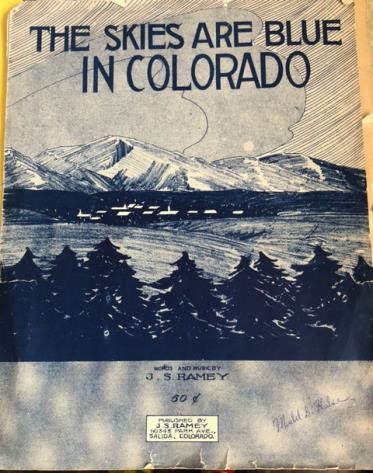
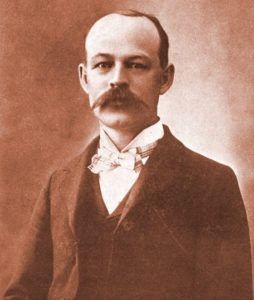
In March, new information about Martin Ray Maez, Sr., 1931-2020, came from his daughter Theresa Kahn. Ray grew up in Salida, married his high school sweetheart Dorothy Maestas, raised a family of three and lived all over the world while serving in the US Air Force. Master Sergeant Ray Maez was buried with full military honors at Pikes Peak National Cemetery, Colorado Springs. His exhibit in the military section has been updated.
Also in March, relatives of the Paquette and Bertschy families visited so their high school age grandsons could see the exhibit featuring pictures of their ancestors. Laura Leona Lindquist Wood came with her husband and grandson, and her sister Merrie Lindquist Barley brought her grandson. Laura and Merrie were born at the D&RG hospital in Salida, both delivered by Dr. Leonardi, and they grew up in Salida. Their father Charles Lindquist was a track foreman for the D&RG. The sisters are related to the Paquettes on their father’s maternal side. They remember the old homestead in Centerville where pioneer ancestors Pierre and Delphine Paquette are buried. These are the great great grandparents of “Fritz” Paquette, MD, who donated the money to rehab the SteamPlant lobby, which is named for him. The sisters are 3rd cousins of the late Dr. Fritz.
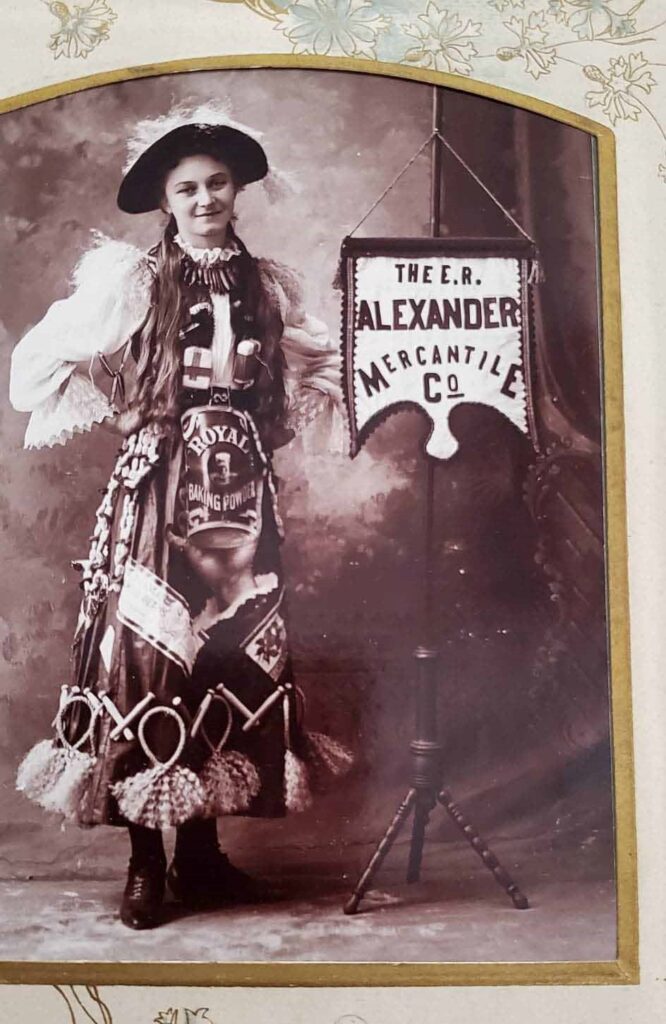
In June we received a late 19th century photo album with fancy hard celluloid cover. Inside are portrait photos taken by Salida photographers, one of which promotes the E. R. Alexander Mercantile Co. City directories for 1903-10 show this company at 127 F Street in the building that later housed Gambles Hardware store and is now Amicas restaurant. The donor found the album at a yard sale and thought we might want it. We added it to a growing collection of family photo albums on display in the south room on one of the pump organs.
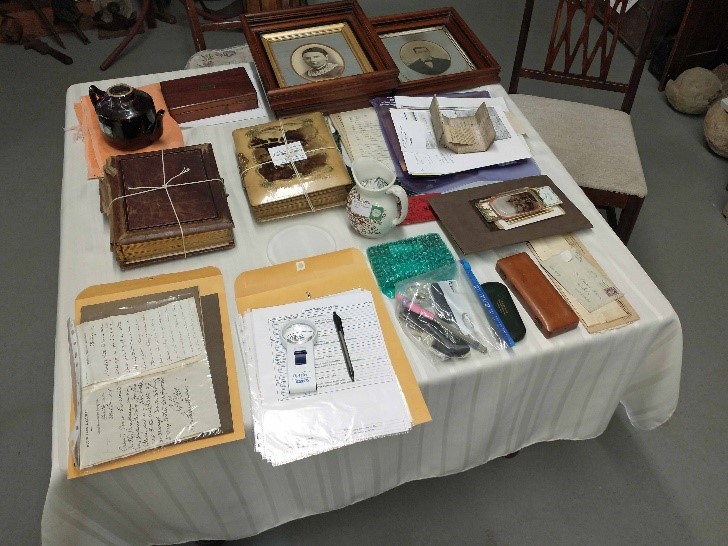
Also in June, we received a big donation of pictures and memorabilia collected over three generations from the Owens families who lived in Salida and Gunnison. Their ancestors were railroad workers from Wales who immigrated around 1900. The donor was Sue Owen Lindauer of Utah.
Library Corner
3rd Street Fish Pond
by Joy Jackson
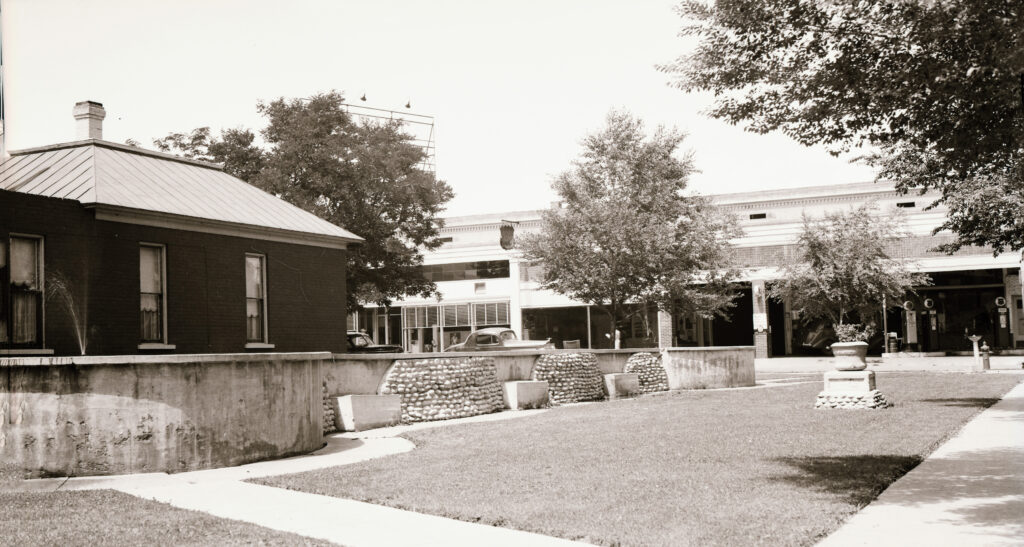
The Fish Pond at F and 3rd Streets was probably built during the 1930s. Located today where the Salida Community Center is (305 F Street), it was a popular spot for tourists to try their hand at catching a Rocky Mountain trout.
The fish run can be seen below at center right during a Salida Parade, ca. 1950s.
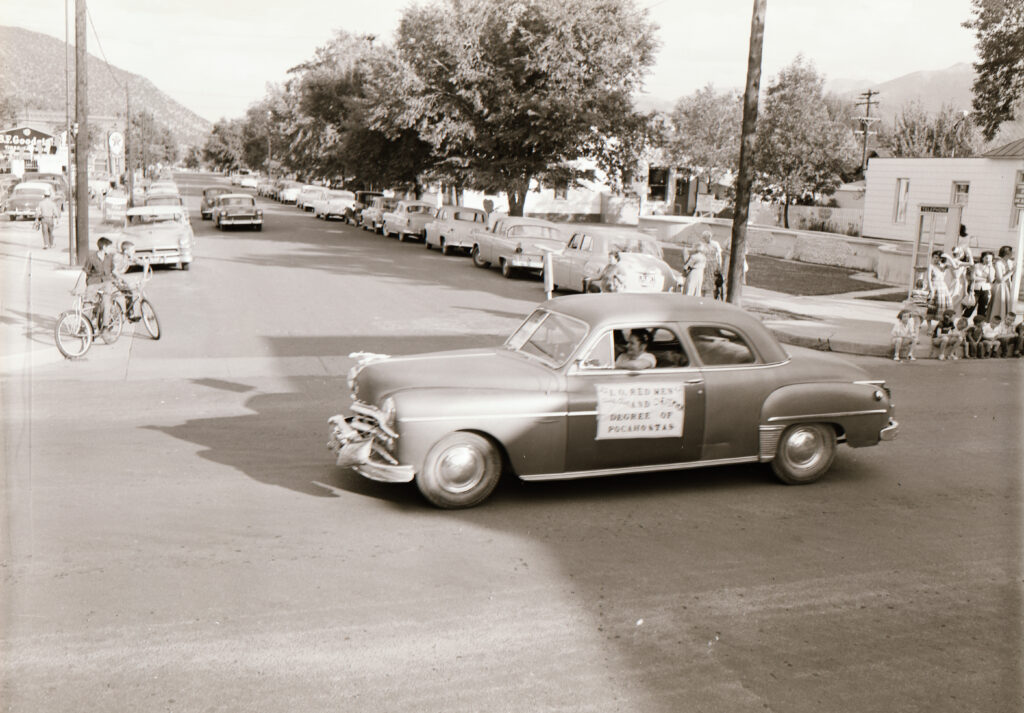
During the FIBArk boat races, fishing contests were held at the pond. Below is a view of the pond; across the street at 300 F Street is the Y & R Auto Company.
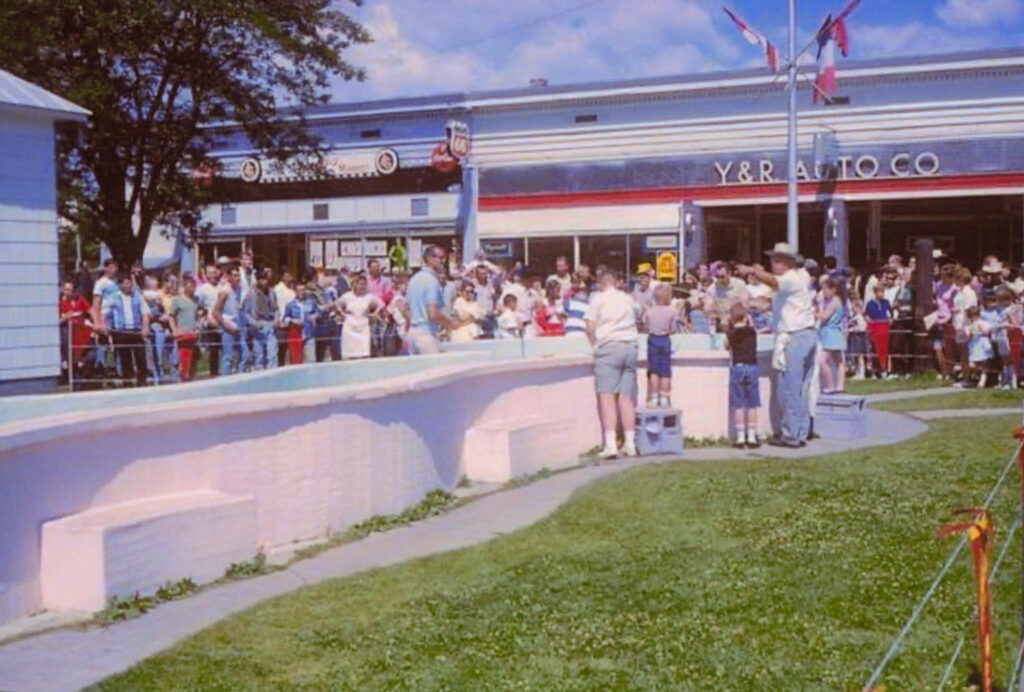
The pond was torn down in 1976 and the Salida Community Center was built in July 1983.
Glass Plate Negative Donation
Recently the museum received a donation of several glass plate negatives from Lisa Fitzgerald of Westminster, Colorado. The negatives contained photos of the Salida area and came from Lisa’s grandfather, who worked for the D&RG Railroad in the early 1900s.
These were silver gelatin-coated dry plate negatives, which were usable when dry and thus easily transported, and required less exposure to light than the original wet plate design. Invented by Dr. Richard L. Maddox and first made available in 1873, dry plate negatives were the first economically successful durable photographic medium. Dry plate negatives are typically on thinner glass than the wet plates, with a more evenly coated emulsion. Dry plate glass negatives were in common use between the 1880s and the late 1920s.
We took the plates to Tim Brown Photography, of Salida, and asked him to make prints. Tim Brown is a commercial, fine art and portrait photographer now specializing in hand-crafted tintype portraits using the techniques and equipment from the mid-1800’s. Check out Tim’s website at timbrownphotography.com.
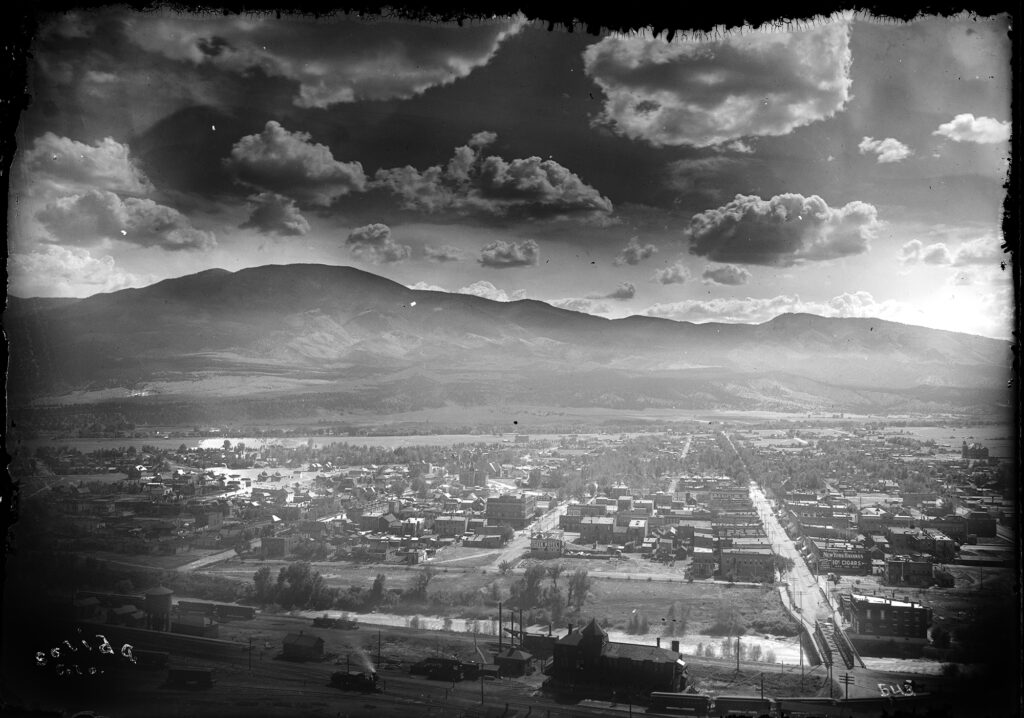
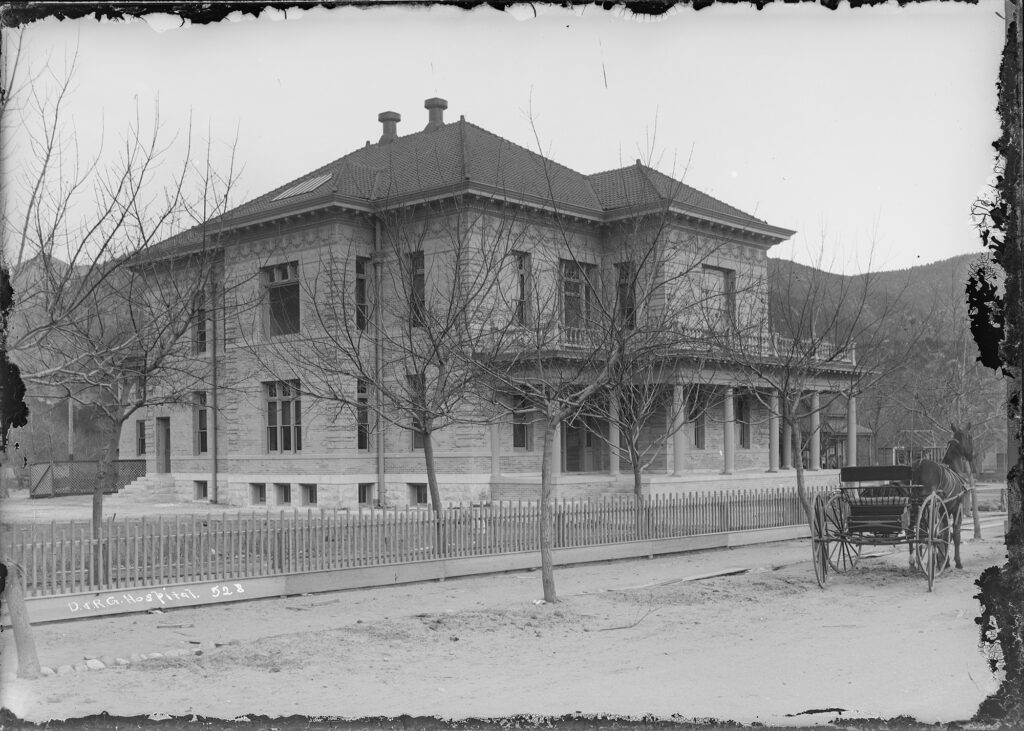
Museum Board of Directors
The current museum board of directors is comprised of the following:
President, Bob Campbell
Secretary, Earle Kittleman, 719-539-6153
Treasurer, Larry Kovacic, 505-280-4831
Board Member, Judith Kinzie, 719-539-9439
Board Member, Arlene Shovald, 719-539-3139
Board Member, Bonnie Konopka, 505-270-6523
Special thanks goes to Margaret Dean, who volunteers as a board liason from Maysville. The members of the South Arkansas Landowners Association (SALA), comprising residents in the Maysville area, do a lot of work taking care of the historic Maysville School, which is owned by the museum. We appreciate their efforts to maintain the school as a historic landmark and look forward to a long and fruitful relationship.
Museum Docents
Giff Kriebel
Ron Regenold
Terry Pintane
Marie Klockenbrink
If you are interested in becoming a board member and coming to one meeting a month (minimal commitment, no summer meetings), let us know. We would be very happy to talk to you about joining our team. Our board meetings are open to the public, so if you want to attend one and find out if you’re interested, the meetings are the third Wednesday of the month, 11:00am, at the museum.
Support the Salida Museum
The Salida Museum Association is an all-volunteer non-profit organization that relies on donations, memberships, admissions and limited fundraising to remain operational. You can help support the museum by making a donation or becoming a member.
Donation – any amount appreciated
Annual Membership – $15, includes 5 free visits
Lifetime Membership – $100, includes unlimited free visits
Memberships and donations are tax deductible. Send your payment to the address listed below, use our website to remit with PayPal, or join when you come in to see the museum. You will receive an acknowledgement letter for tax purposes. (make sure we have your address)
Salida Museum Association
406 1/2 W. Hwy 50, Salida, Colorado 81201
salidamuseum@gmail.com
719-539-7483
For more museum information, see our website or Facebook page.
